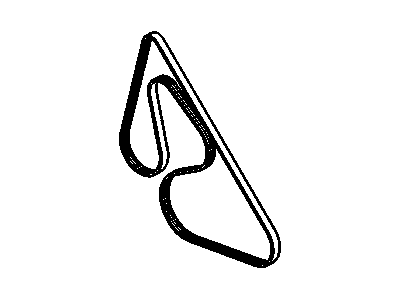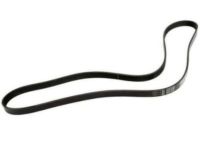
My Garage
My Account
Cart
Genuine Cadillac Fleetwood Drive Belt
Serpentine Belt- Select Vehicle by Model
- Select Vehicle by VIN
Select Vehicle by Model
orMake
Model
Year
Select Vehicle by VIN
For the most accurate results, select vehicle by your VIN (Vehicle Identification Number).
5 Drive Belts found
Cadillac Fleetwood Belt, Water Pump & A/C Compressor & Generator
Part Number: 10186120$9.88 MSRP: $27.66You Save: $17.78 (65%)Ships in 1-2 Business DaysCadillac Fleetwood Belt,Generator & A/C Compressor & P/S Pump
Part Number: 19244956$21.07 MSRP: $33.02You Save: $11.95 (37%)Ships in 1-2 Business DaysCadillac Fleetwood Belt,Water Pump & A/C Compressor & Generator & P/S Pump
Part Number: 88986828$41.95 MSRP: $76.12You Save: $34.17 (45%)Ships in 1-2 Business DaysCadillac Fleetwood Belt,Water Pump & A/C Compressor & Generator & P/S Pump <Do Not Use Aft
Part Number: 19355279
Cadillac Fleetwood Drive Belt
The Drive Belt in Cadillac Fleetwood is a working component that allows the engine to transfer power to such gadgets as the alternator and the A/C compressor. Normally, these parts are coupled with the help of a serpentine belt that is fixed on the crankshaft pulley. Most of the Drive belts used in the common Fleetwood automobiles have a lifespan of about 100000 miles; however, they may degrade at a faster rate than expected. Drive Belts include V-belts, timing belts, serpentine belts, etc., get improved traction, have high durability, and have no slippage. In general, Drive Belts are used in vehicles for transmitting power or motion in cases where the shafts are not in close physical contact and have to withstand variation in position; offer high efficiency in their function.
Each OEM Cadillac Fleetwood Drive Belt we offer is competitively priced and comes with the assurance of the manufacturer's warranty for the part. Furthermore, we guarantee the speedy delivery of your orders right to your doorstep. Our hassle-free return policy is also in place for your peace of mind.
Cadillac Fleetwood Drive Belt Parts Questions & Experts Answers
- Q: What are the inspection guidelines for drive belts on Cadillac Fleetwood?A:There are two things you need to check when looking at the drive belts, glazed belts and cracks and both of them are responsible for poor performance. For a good belt, one should expect to see some fabric in it, unlike the glased one that will have a smooth surface due to slippage. Their beginning is always at the edge towards the inner side and then they spread outwards. It is important to replace any worn or failed belts in a timely manner, preferably all drive belts together as a preventive action. In addition, the serpentine belts, which rotate engine accessories such as alternator, air pump, power steering pump, air conditioning compressor and water pump do not show their aging signs like those with rubber casings which are characteristic of older-style belts thus necessitating regular visual checks. Thereafter change after two-three years. The new engines have single wider serpentine belt design known as Poly-V pattern that represents six narrow V-belts combined together and an engine-mounted belt automatic tensioner mechanism that provides 120 lbs (534 N) of belt tension. The used up straps may make noise or cause accessories not work properly on account of slipping off. No adjustment is necessary because there is a spring-loaded tensioner that eliminates slack on the drive belt allowing it to rotate so that it can be taken off the motor by turning the auto-tensioner assembly counterclockwise. Generally, it is fine to have cracks on serpentine belts on their rib side, but be cautious if you identify rib misses or chunks; the loss of two or more adjacent ribs; or any noises vibrational annoyances. Take 4.5L, 4.6L and 4.9L engines for instance-removing this type of accessory starts with applying downward force into square hole in tensioner using 1 inch flex handle while rotating counter-clockwise thus giving enough room for sliding it out from the pulleys. Lastly, to reinstall you will have to use the schematic and put the drive belt over all pulleys except for the power steering one, rotate the tensioner, and place it on the steering wheel's while ensuring that it touches correctly in all V-shaped grooves.
















